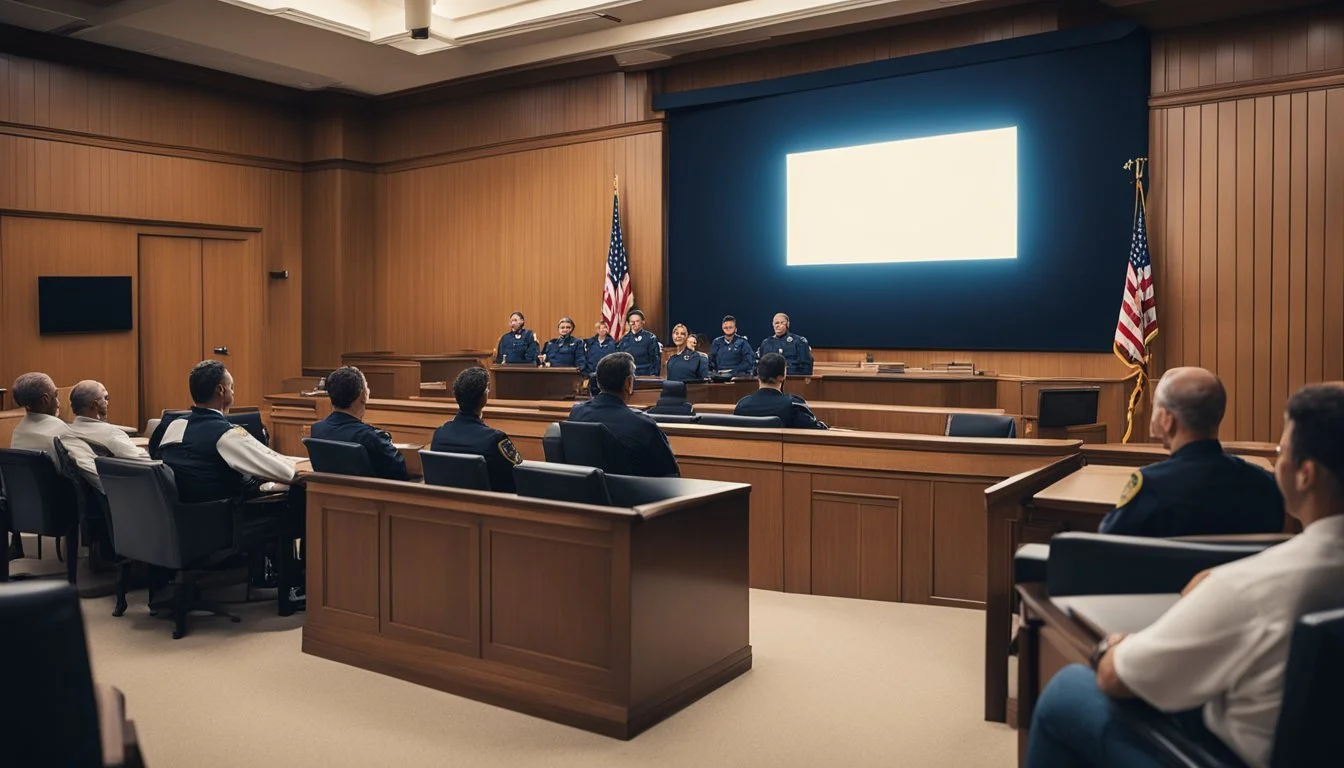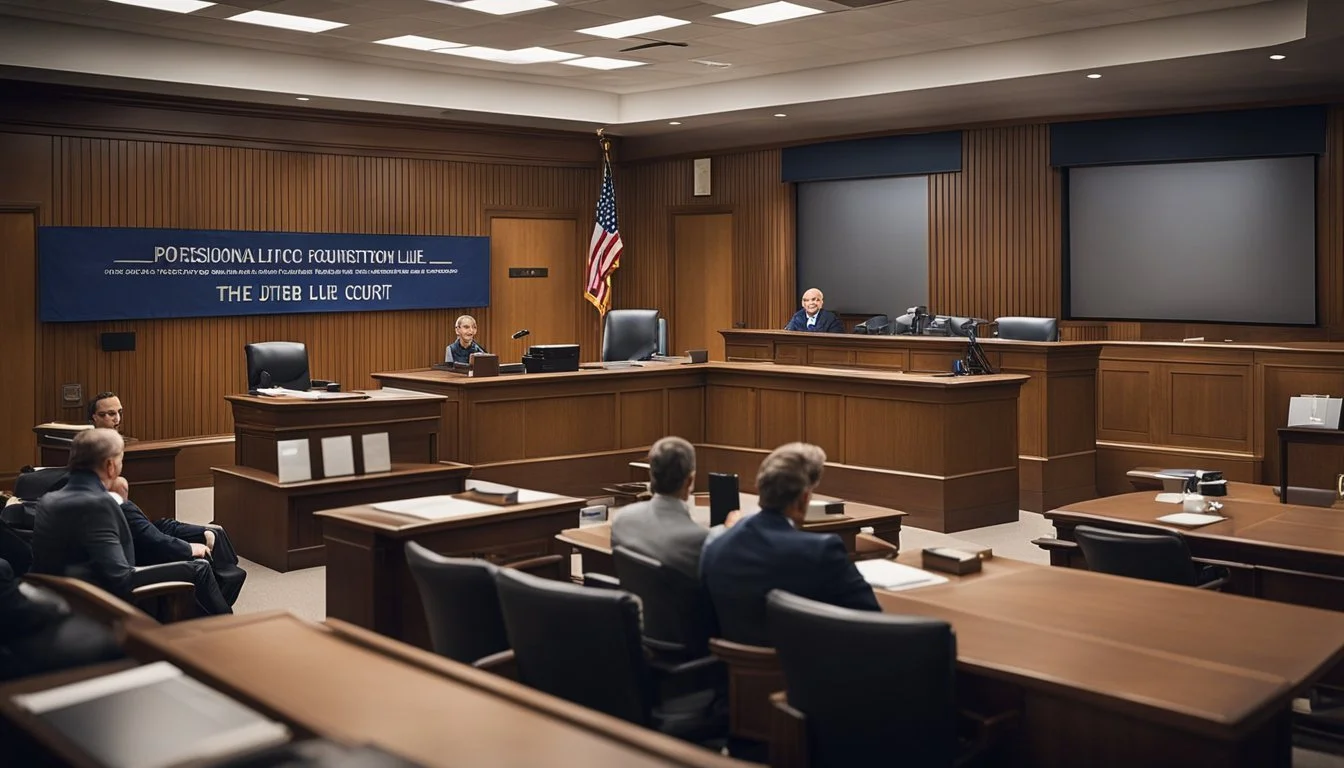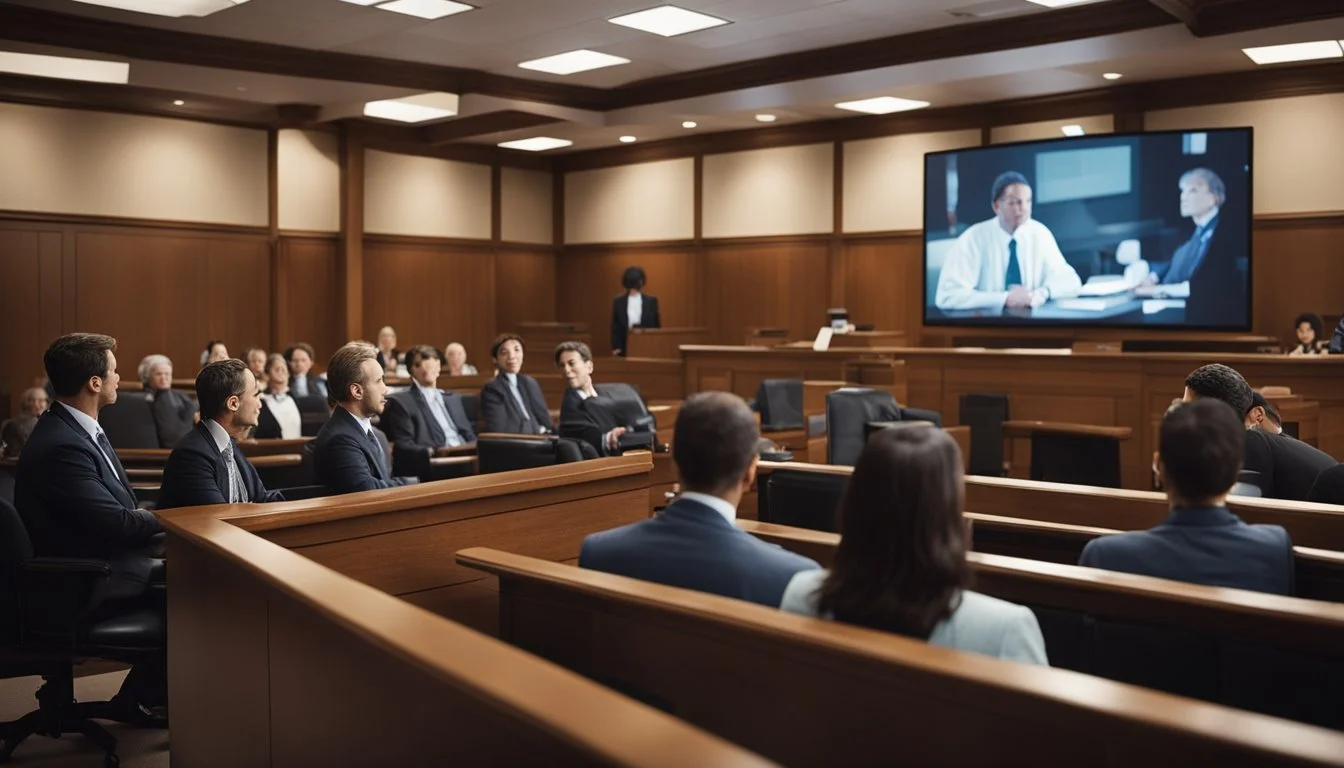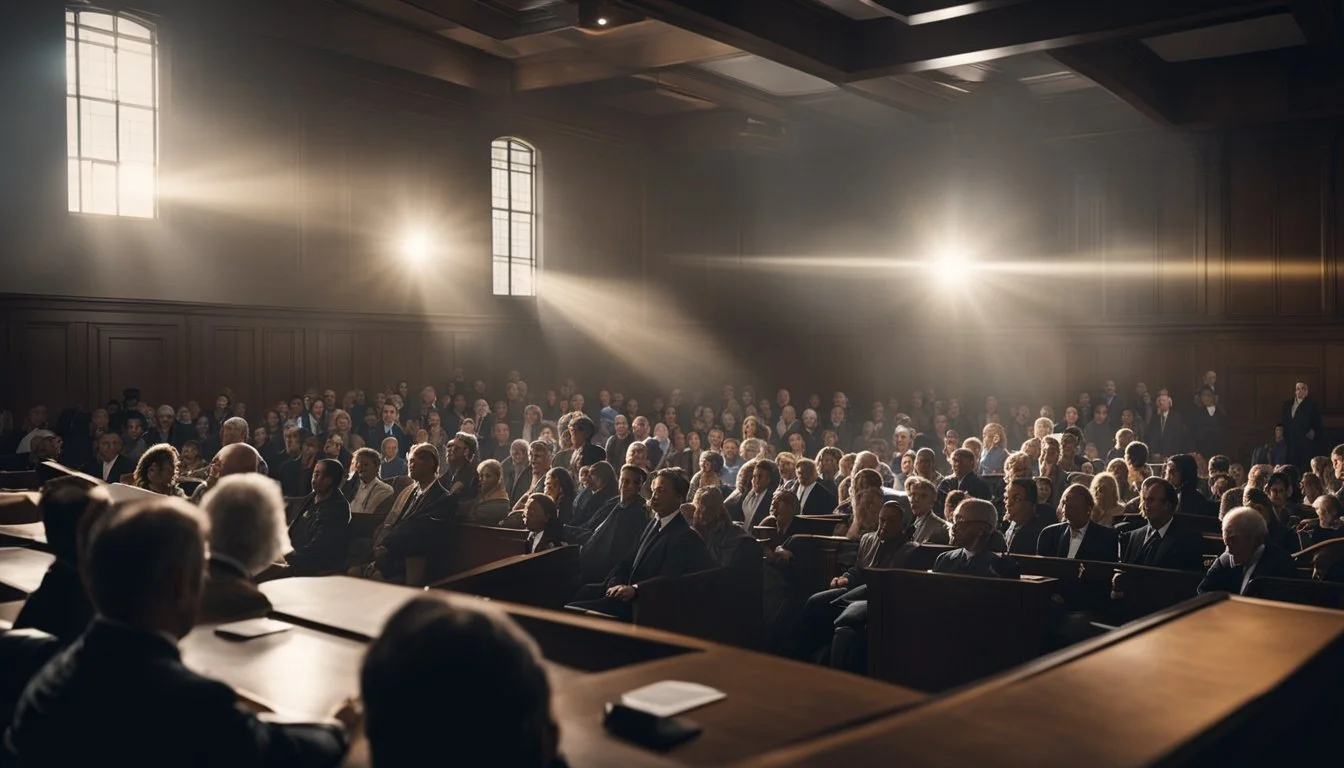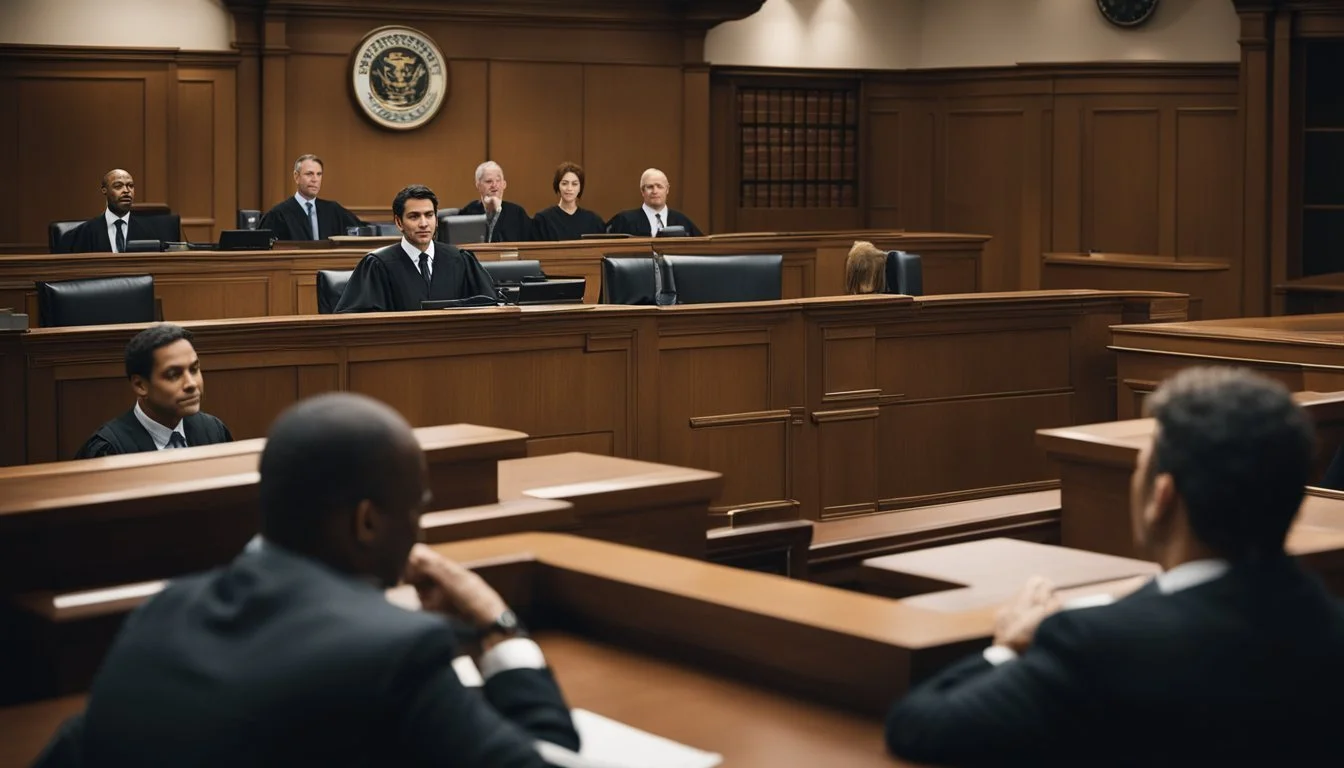Documentary The Thin Blue Line Overturns Verdict and Transforms Filmmaking
The 1988 documentary "The Thin Blue Line" stands as a landmark in cinema history, challenging the boundaries between film and justice. Directed by Errol Morris, this groundbreaking work exposed flaws in the conviction of Randall Dale Adams for the murder of a Dallas police officer. The film's meticulous investigation and innovative storytelling techniques not only captivated audiences but also led to Adams' exoneration, demonstrating the profound impact cinema can have on real-world legal outcomes.
Morris employed a unique blend of interviews, dramatized reenactments, and a haunting score to construct a compelling narrative that questioned the official verdict. This approach sparked controversy within the documentary world, with some critics arguing against the use of reenactments in non-fiction filmmaking. Despite these debates, "The Thin Blue Line" paved the way for a new era of true crime documentaries and investigative journalism in film.
The documentary's influence extended far beyond the cinema screen. It sparked public discourse on the fallibility of the justice system and the power of visual media to effect change. "The Thin Blue Line" not only altered the fate of one man but also inspired a generation of filmmakers to use their craft as a tool for social justice, forever blurring the line between art and activism.
The Birth of 'The Thin Blue Line'
'The Thin Blue Line' emerged as a groundbreaking documentary that challenged the judicial system. Its innovative approach and compelling storytelling captivated audiences and sparked a re-examination of a controversial murder case.
Concept and Development
Errol Morris, an aspiring filmmaker, stumbled upon the case of Randall Dale Adams while researching another project. Intrigued by the inconsistencies in Adams' conviction for the murder of a Dallas police officer, Morris decided to investigate further.
He conducted extensive interviews with key figures involved in the case, including Adams, witnesses, and law enforcement officials. Morris's unique approach involved filming reenactments of crucial events, a technique that would become his signature style.
The director's background in philosophy and his fascination with truth-seeking shaped the film's narrative structure. He aimed to present multiple perspectives, allowing viewers to piece together the puzzle themselves.
Influence of Errol Morris
Morris's unconventional background as a private detective and his philosophical training heavily influenced the film's investigative nature. His meticulous attention to detail and persistent questioning of established narratives set 'The Thin Blue Line' apart from traditional documentaries.
The director's innovative use of dramatic reenactments blurred the lines between documentary and narrative filmmaking. This technique allowed viewers to visually experience different accounts of the crime, highlighting discrepancies in testimonies.
Morris's commitment to uncovering the truth led him to spend years researching and filming. His dedication paid off, as the documentary not only garnered critical acclaim but also played a crucial role in exonerating Randall Dale Adams.
The Role of Philip Glass' Score
Philip Glass, a renowned minimalist composer, created the haunting score for 'The Thin Blue Line'. His music became an integral part of the film's narrative structure and emotional impact.
Glass's repetitive, hypnotic compositions perfectly complemented Morris's visual style. The score enhanced the tension and uncertainty surrounding the case, creating an atmosphere of unease and mystery.
The music also served as a unifying element, tying together the various interviews, reenactments, and archival footage. Glass's score became so iconic that it influenced future documentary soundtracks, setting a new standard for the genre.
Reconstructing the Crime
"The Thin Blue Line" employs innovative techniques to recreate the events surrounding the murder of Dallas police officer Robert W. Wood. Through dramatic reenactments and meticulous attention to detail, the film challenges the official narrative and raises doubts about Randall Dale Adams' conviction.
Dramatization Techniques
Morris uses stylized reenactments to visualize key moments from the crime and investigation. These scenes are shot in noir-like fashion, with moody lighting and slow-motion sequences. The director focuses on specific details, such as a milkshake spilling during the shooting.
These dramatizations are interspersed with interview footage, creating a stark contrast between the stylized recreations and raw testimonies. Morris also incorporates archival photographs and documents to ground the reenactments in reality.
Comparison of Reenactments to Real Events
The film presents multiple versions of the crime, reflecting conflicting testimonies from witnesses and suspects. Each reenactment subtly shifts details, highlighting discrepancies in the accounts of David Harris and other key figures.
Morris juxtaposes these varying recreations against official records and physical evidence. This approach allows viewers to critically examine the prosecution's case against Adams. By visualizing different scenarios, the film exposes potential flaws in the investigation and trial proceedings.
The reenactments serve as a powerful tool for questioning the established "truth" of the case. They invite audiences to reassess the evidence and consider alternative explanations for Officer Wood's murder.
Exploring the Justice System
"The Thin Blue Line" exposed flaws in the criminal justice system through its examination of Randall Dale Adams' case. The film scrutinized key elements of the legal process, revealing how errors and misconduct can lead to wrongful convictions.
Role of Attorneys and Prosecution
The documentary highlighted the critical roles played by attorneys and prosecutors in shaping case outcomes. Adams' defense team faced challenges in presenting evidence and cross-examining witnesses effectively. The prosecution's aggressive pursuit of a conviction raised questions about prioritizing justice over winning cases.
The film showed how limited resources for public defenders can impact case preparation and representation quality. It also revealed potential conflicts of interest, as some attorneys had personal or professional connections that influenced their actions.
Witnesses and Testimony
Witness reliability emerged as a central issue in Adams' case. The film exposed how eyewitness accounts can be unreliable or manipulated. Key witnesses changed their stories over time, casting doubt on the prosecution's narrative.
Morris' interviews with witnesses years after the trial revealed inconsistencies and potential motives for false testimony. The documentary highlighted how factors like stress, suggestive questioning, and the passage of time can affect memory and witness credibility.
Analysis of the Trial Proceedings
"The Thin Blue Line" meticulously examined the trial itself, uncovering procedural irregularities and questionable decisions. The film showed how jury selection and instructions can influence verdicts. It also revealed instances where potentially exculpatory evidence was not presented or was downplayed during the trial.
The documentary raised concerns about the use of expert testimony and forensic evidence. It demonstrated how juries might misinterpret or overvalue certain types of evidence, leading to flawed conclusions about guilt or innocence.
Uncovering the Truth
Errol Morris's documentary "The Thin Blue Line" employed innovative techniques to expose flaws in the justice system. The film's approach combined rigorous investigation with compelling storytelling to shed new light on Randall Dale Adams' wrongful conviction.
Investigative Journalism Approach
Morris delved deep into the case, examining evidence overlooked by police and prosecutors. He uncovered inconsistencies in witness testimonies and police reports. The filmmaker's meticulous research revealed key details that cast doubt on Adams' guilt.
Morris interviewed numerous individuals connected to the case. These included witnesses, police officers, and even the likely perpetrator, David Harris. Through these conversations, he pieced together a more accurate timeline of events surrounding the murder.
The documentary presented previously undisclosed facts. It highlighted the questionable tactics used by law enforcement to secure Adams' conviction. This thorough investigation laid bare the flaws in the original case against Adams.
Power of Interviews and Narrative
Morris's interview style proved particularly effective in drawing out crucial information. He allowed subjects to speak at length, often revealing inconsistencies in their stories. The film's editing juxtaposed these interviews to expose contradictions and unreliable testimonies.
The documentary wove a compelling narrative from these interviews and evidence. It presented a clear, alternative explanation for the crime that pointed away from Adams' guilt. Morris's storytelling approach made complex legal issues accessible to a wide audience.
By humanizing Adams and other key figures, the film engaged viewers emotionally. This narrative power helped generate public interest and support for Adams' case. It demonstrated how media could influence public perception of a conviction and ultimately impact the legal process.
The Impact on Randall Adams' Case
Errol Morris's documentary "The Thin Blue Line" played a crucial role in overturning Randall Adams' conviction and death sentence. The film's revelations led to a series of legal actions that ultimately secured Adams' freedom.
Actions Leading to Release from Death Row
"The Thin Blue Line" exposed significant flaws in Adams' conviction. It presented new evidence and highlighted inconsistencies in witness testimonies. The film's impact prompted a reopening of the case by Texas authorities.
Adams' legal team used the documentary's findings to file a habeas corpus petition. This legal action challenged the validity of his detention based on the newly uncovered evidence.
The Texas Court of Criminal Appeals reviewed the case in light of the film's revelations. They found that key prosecution witnesses had committed perjury during the original trial.
Legal Repercussions and Appeals
The appeals process gained momentum following the documentary's release. Adams' attorneys argued that prosecutors had suppressed evidence favorable to the defense during the initial trial.
In 1989, the Texas Court of Criminal Appeals overturned Adams' conviction. They cited prosecutorial misconduct and the suppression of exculpatory evidence as grounds for their decision.
After spending 12 years in prison, including time on death row, Randall Adams was released. The Dallas District Attorney's office declined to retry the case, effectively acknowledging the injustice of Adams' conviction.
Adams' case highlighted the potential for wrongful convictions in the American justice system. It underscored the importance of thorough investigations and the power of media in exposing miscarriages of justice.
Public and Critical Reception
"The Thin Blue Line" garnered significant attention from critics, academics, and award bodies. The film's innovative approach to documentary filmmaking and its real-world impact on the criminal justice system sparked widespread discussion and acclaim.
Film Criticism and Academic Study
Critics praised "The Thin Blue Line" for its groundbreaking style and compelling narrative. Roger Ebert awarded the film four stars, commending its meticulous investigation and innovative use of reenactments. The documentary's film noir aesthetics and non-linear storytelling drew comparisons to classic detective films.
Academic circles embraced the film as a subject of study. Scholars analyzed its impact on documentary filmmaking techniques and its role in challenging traditional notions of objectivity in non-fiction cinema. The film's ability to blend artistic expression with journalistic inquiry became a focal point in discussions about the evolving nature of documentary filmmaking.
Awards and Recognition
"The Thin Blue Line" received numerous accolades for its artistic merit and social impact. The film won the New York Film Critics Circle Award for Best Documentary in 1988. It earned critical acclaim at international film festivals, including the Sundance Film Festival.
In 2001, the Library of Congress selected "The Thin Blue Line" for preservation in the United States National Film Registry, recognizing its cultural, historical, and aesthetic significance. This honor solidified the film's status as a landmark in American cinema.
The documentary's exclusion from Academy Award consideration due to its use of reenactments sparked controversy and debate within the film industry about the criteria for documentary eligibility.
Influence on Film and Society
"The Thin Blue Line" revolutionized documentary filmmaking and sparked real-world change through its groundbreaking approach to storytelling and investigative journalism.
Changing Perspectives on Documentary Filmmaking
Errol Morris's film challenged traditional documentary conventions. It blurred the lines between fiction and non-fiction by using stylized reenactments and a haunting Philip Glass score. This innovative approach inspired a new wave of filmmakers to experiment with form and narrative techniques in documentaries.
The film's success prompted a shift in how documentaries were perceived. It demonstrated that documentaries could be both informative and cinematically engaging. This paved the way for more creative and visually striking non-fiction films in the years that followed.
"The Thin Blue Line" also raised important questions about objectivity in documentary filmmaking. Morris's active involvement in the case and his clear stance on Adams's innocence challenged the notion of the detached, impartial documentarian.
Real-World Change and Activism
The film's impact extended far beyond the world of cinema. It played a crucial role in exonerating Randall Dale Adams, who had been wrongfully convicted of murder. The evidence presented in the documentary led to a reopening of the case and Adams's eventual release from prison.
This real-world outcome inspired other filmmakers to use their craft as a tool for social justice. It demonstrated the power of cinema to effect tangible change in the legal system and society at large.
The film's success also sparked a renewed interest in wrongful conviction cases. It helped raise public awareness about flaws in the criminal justice system and the potential for miscarriages of justice.
"The Thin Blue Line" became a catalyst for activism, inspiring viewers to question authority and advocate for justice reform. It highlighted the importance of critical thinking when examining evidence and witness testimonies in criminal cases.
Beyond the Film
"The Thin Blue Line" sparked a revolution in documentary filmmaking and legal advocacy. Its impact extended far beyond the courtroom, influencing future filmmakers and reshaping public perception of the justice system.
Legacy and Continued Relevance
The film's innovative visual style and storytelling techniques set new standards for documentary cinematography. Its use of reenactments and stylized shots became a template for future true-crime documentaries.
The Library of Congress recognized the film's cultural significance by adding it to the National Film Registry in 2001. This honor cemented its place in American cinematic history.
"The Thin Blue Line" continues to be studied in film schools and law classes. It serves as a prime example of how media can influence legal proceedings and public opinion.
The film's success in exonerating Randall Adams inspired other filmmakers to tackle wrongful convictions. This led to a wave of advocacy documentaries aimed at exposing flaws in the justice system.
Subsequent Projects and Similar Works
Director Errol Morris went on to create other acclaimed documentaries, further refining his distinctive style. His 2003 film "The Fog of War" won an Academy Award for Best Documentary Feature.
Joshua Oppenheimer's "The Act of Killing" (2012) drew comparisons to "The Thin Blue Line" for its bold approach to reenactments and its impact on real-world events.
Hollywood took notice of the film's success. Several dramatized versions of wrongful conviction stories followed, including "The Hurricane" (1999) and "Conviction" (2010).
True-crime series like "Making a Murderer" and "The Jinx" built on the foundation laid by "The Thin Blue Line," using long-form storytelling to examine complex legal cases.

